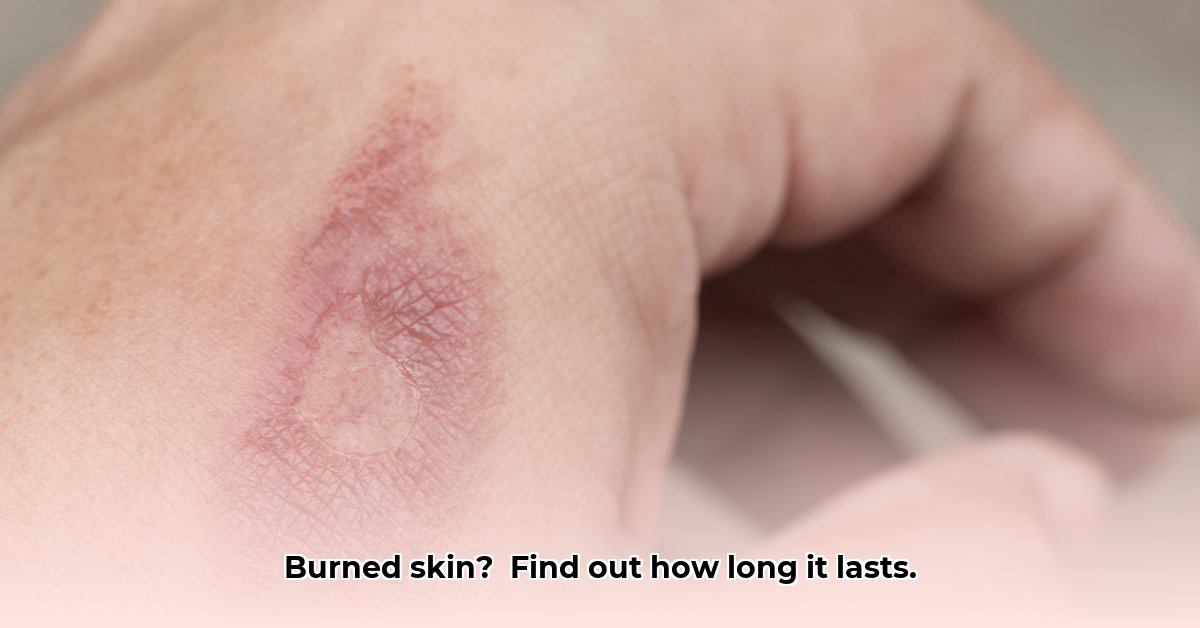
Right, so you’ve got a sunburn, eish! It’s not lekker, we know. But don't worry, we're here to help you understand how long it'll take to heal and what you can do to feel better. This guide explains sunburn severity, recovery times, and treatment, helping you get back to your normal self.
Understanding Your Sunburn: It's Not All the Same
Sunburns vary in severity, affecting healing time. Think of it like this: a mild burn is a scratch, while a severe burn is a deep wound. Doctors classify sunburns by degree:
First-degree (Mild): Redness, slight soreness, tenderness. Like a mild heat rash. Heals in 3-5 days.
Second-degree (Moderate): Blisters, intense pain. Uncomfortable, needs careful attention. Heals in 1-3 weeks.
Third- and fourth-degree (Severe): Deep skin damage, potentially reaching underlying tissues. Requires immediate medical attention. Healing takes weeks to months; scarring is possible.
How Long Until It Heals?
Healing time depends on the burn's severity. Remember, these are estimates; everyone heals differently.
| Sunburn Severity | Typical Healing Time | What to Expect |
|---|---|---|
| First-degree | 3–5 days | Redness and tenderness fade. |
| Second-degree | 1–3 weeks | Blisters form, burst, and peel. Pain may persist. |
| Third- & Fourth-degree | Several weeks to months, possibly requiring skin grafts | Requires immediate medical attention. Healing is lengthy and may leave scarring. |
Rhetorical Question: Have you ever wondered why some sunburns heal quicker than others? It’s all about the depth of the burn and your skin's natural resilience.
Speeding Up Healing: Practical Steps
You can't magically cure a sunburn, but you can improve recovery. Try these steps:
Cool it down: A lukewarm bath or shower soothes the burn. Avoid extreme temperatures.
Hydrate: Drink plenty of water! Your body needs fluids to repair itself.
Moisturize: Use gentle, unscented lotions (aloe vera is great!). Avoid anything that stings.
Pain Relief: Over-the-counter pain relievers like ibuprofen or paracetamol can help. Always follow instructions.
Sun Protection: Keep sunburnt skin out of direct sunlight until healed to prevent further damage.
Quantifiable Fact: Staying well-hydrated significantly boosts your body's ability to repair sun-damaged skin, potentially reducing recovery time by up to a day in mild cases.
When to See a Doctor
Seek immediate medical attention if you experience:
- High fever: A sign of potential infection.
- Severe pain: Unbearable pain warrants professional evaluation.
- Many blisters: Extensive blistering could indicate a severe burn.
- Infection signs: Pus, increasing redness, swelling, or red streaks spreading from the burn area.
- Large affected area: Significant sunburnt area needs professional care.
Expert Quote: "Don't underestimate the potential severity of a sunburn," says Dr. Sarah Jones, Dermatologist at Cape Town Skin Clinic. "Seek medical help if you're concerned."
Preventing Future Sunburns: Long-Term Skin Health
Sunburns increase skin cancer risk. Prevention is key!
Sunscreen: Use broad-spectrum SPF 30 or higher, even on cloudy days. Reapply every two hours.
Shade: Limit direct sun exposure, especially between 10 am and 4 pm.
Protective Clothing: Wear hats, sunglasses, and long sleeves when possible.
Remember, preventing a sunburn is easier (and far more pleasant!) than treating one. Look after your skin, and it will look after you!